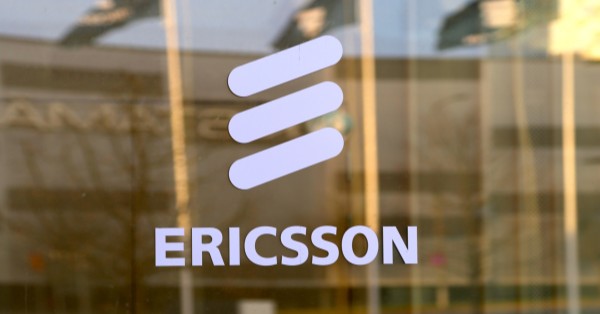Verizon Communications beat Wall Street expectations with its Q1 2025 earnings, posting solid growth in revenue and profits. But despite the strong financials, the company’s stock declined—highlighting investor concern over a worrying trend: Verizon just reported one of its worst quarters on record for customer retention.
The numbers tell a tale of two halves—strong top-line performance, but deep cracks in subscriber loyalty that are weighing heavily on market sentiment.
Verizon’s Q1 2025 Earnings Beat Forecasts but Fail to Impress Wall Street
Verizon reported adjusted earnings per share of $1.19, exceeding the analyst consensus of $1.15. Revenue rose 1.5% year-over-year to $33.5 billion, slightly above the expected $33.3 billion. Wireless-service revenue climbed 2.7% to $20.8 billion, while wireless-equipment revenue saw a modest 0.7% increase to $5.4 billion.
The company’s free cash flow also improved significantly—rising to $3.6 billion, compared to $2.7 billion a year ago—an encouraging sign for dividend stability, especially given Verizon’s attractive 6.3% dividend yield.
Yet, despite these beats, Verizon’s stock fell 1.8% to $42.22 in early trading, signaling that investors were more focused on subscriber trends than financial metrics.
Verizon Reports Record Postpaid Subscriber Losses in Q1 2025
The big concern: Verizon lost 289,000 postpaid phone subscribers in Q1—its worst quarterly result since 2017 and equal to its all-time record low, according to analysts at New Street Research and KeyBanc Capital Markets.
Analysts had expected a loss of about 197,000, making the actual number significantly worse. Verizon’s Chief Financial Officer, Tony Skiadas, pointed to recent pricing actions as the primary cause.
“Our consumer postpaid phone net losses reflect the impact of recent pricing actions,” Skiadas said during the earnings call.
Verizon had warned earlier in the year about “elevated competitive intensity,” but the severity of churn surprised many observers. Analysts at Evercore said the churn “was more acute than expected exiting the quarter.”
How Verizon’s Price Hikes Drove Customer Churn in Early 2025
Verizon has implemented several price increases in recent years. Initially, those adjustments seemed manageable, as mobile service remains essential. But Q1 2025 marked a tipping point.
“In the past we made necessary price adjustments, which impacted churn,” said Sowmyanarayan Sampath, Verizon’s Consumer Chief. “But it was the right thing to do.”
The company has since tried to stop the bleeding with new promotions, including a price lock offer and free phone deals, launched in March. Sampath noted that these measures began reversing the trend, with customer growth resuming in late March and early April.
Prepaid Growth Gives Verizon a Bright Spot in a Tough Quarter
Verizon’s prepaid segment was a bright spot. The company reported 137,000 net prepaid additions, exceeding analyst expectations and marking its best prepaid quarter since acquiring TracFone in 2021.
“We turned around our prepaid business,” said Sampath, crediting revamped value propositions, broader distribution, and improved operations.
Verizon anticipates gaining market share in prepaid this year. Still, analysts cautioned that this may not be enough. As the U.S. wireless market saturates and immigration slows, the available prepaid customer base could shrink, putting pressure back on the more profitable postpaid segment.
Verizon Maintains 2025 Outlook Despite Churn Pressures
Verizon maintained its 2025 guidance for adjusted earnings-per-share growth of 0% to 3%, excluding any impact from potential tariffs introduced by the Trump administration.
So far, the company has managed to weather macroeconomic uncertainty—including inflation and trade policy—better than most. With a domestically-focused business model, it remains relatively insulated from import/export disruptions.
Yet, as Scotiabank’s telecom analyst Maher Yaghi noted:
“Until the company shows a material and sustainable improvement in wireless postpaid consumer subscriber growth, investors will not be willing to give the stock a higher multiple.”
Market Reacts to Verizon’s Mixed Q1 as AT&T and T-Mobile Await
Verizon was the first of the “big three” U.S. wireless carriers to report Q1 earnings. AT&T and T-Mobile will follow shortly, and investors are watching closely to see whether Verizon’s subscriber issues are unique or part of a broader market trend.
On Tuesday, AT&T shares remained flat, while T-Mobile rose 0.7%. Verizon, despite its rough quarter, was still up 7.4% year-to-date as of Monday’s close—outperforming the S&P 500, which is down 12% in 2025.
That outperformance has largely been driven by Verizon’s stable dividend and investor perception that it is a defensive play during uncertain economic times. But ongoing subscriber losses could put that narrative at risk.
Can Verizon’s New Promotions Reverse Its Postpaid Subscriber Decline?
While Verizon executives remain optimistic about the second quarter and full-year recovery, analysts remain skeptical. Verizon added just 82,000 net postpaid phone customers in all of 2024, meaning the bar for improvement is low—but so is investor patience.
The carrier’s recent pricing relief efforts—along with its push into FWA, private networks, and enterprise 5G services—may help in the long term. But in the near term, consumer sentiment around pricing and value remains a key challenge.
Verizon’s Solid Financials Undermined by Record Churn in Q1 2025
Verizon’s Q1 2025 results highlight the ongoing tension between profitability and customer retention in a competitive and inflation-sensitive telecom market. While its financial fundamentals remain solid, record subscriber losses are raising red flags for investors.
To regain momentum, Verizon will need to demonstrate that it can reverse churn trends, retain pricing power, and deliver sustainable subscriber growth—without compromising its core strength in free cash flow and dividend stability.



























